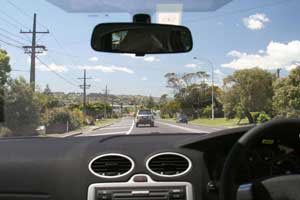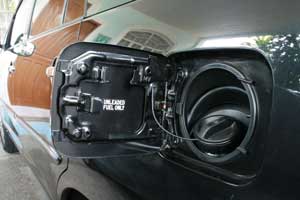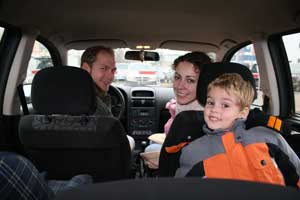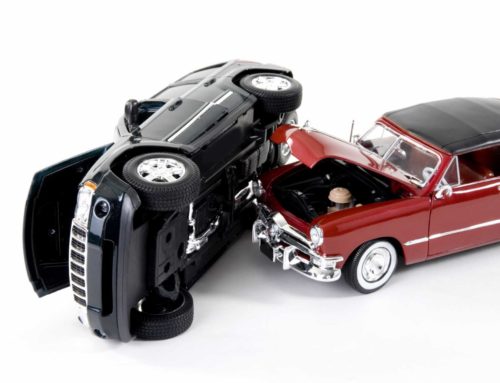Test driving a car enables you to find out if you’re comfortable with the car, that you’ll enjoy driving it, and that it fits your needs and requirements. The test drive is a vital step in ensuring a vehicle is suitable for you, and should be your number one priority once you have found a car in your price range that you like.
 As difficult as it may seem, don’t just jump straight into the driver’s seat! It’s not just about driving the car, you have to ‘live’ with this car for possibly some years, therefore take a moment to test other features, such as opening the bonnet, doors, petrol cap and boot. How easy is it to do these things and are all devices secure?
As difficult as it may seem, don’t just jump straight into the driver’s seat! It’s not just about driving the car, you have to ‘live’ with this car for possibly some years, therefore take a moment to test other features, such as opening the bonnet, doors, petrol cap and boot. How easy is it to do these things and are all devices secure?
What about passenger space? If you are planning on using the vehicle as a family car, or you carry a lot of passengers around, then you will most definitely want to test the passenger space in the rear of the car. Is it easy to access the back seat and how much room will your back seat passengers have? Do you have a baby or small child? If so, is there enough room for a baby seat or booster chair? If so, will it be easy for you to get your infant in and out of the car? If you and your family take a lot of long trips, is there ample leg room for passengers on long journeys? Basically, would you be comfortable travelling in the passenger seat or back seat of the vehicle?
 Along with passenger space, you need to consider how much boot/load space you require. Is there room for your shopping or your sports equipment or the baby pram once it’s folded up? If you carry heavy or bulky loads, will you be able to comfortably and safely lift these items in and out of the boot/load space or is the lip of the boot too high? If you are going to be carrying heavy loads you will also need to ensure the engine is powerful enough to handle this.
Along with passenger space, you need to consider how much boot/load space you require. Is there room for your shopping or your sports equipment or the baby pram once it’s folded up? If you carry heavy or bulky loads, will you be able to comfortably and safely lift these items in and out of the boot/load space or is the lip of the boot too high? If you are going to be carrying heavy loads you will also need to ensure the engine is powerful enough to handle this.
 When it’s time to get behind the wheel for the actual test drive make sure you get as comfortable as possible behind the steering wheel. Can the steering wheel position be moved? Can you move the mirrors? Can you see safely all around the vehicle? How many blind spots are there? If you can’t safely and comfortably see what’s going on around you, or you simply don’t feel comfortable in the car (perhaps the drivers seat is too low?), then the car is not going to suit you and you don’t need to continue with the test drive.
When it’s time to get behind the wheel for the actual test drive make sure you get as comfortable as possible behind the steering wheel. Can the steering wheel position be moved? Can you move the mirrors? Can you see safely all around the vehicle? How many blind spots are there? If you can’t safely and comfortably see what’s going on around you, or you simply don’t feel comfortable in the car (perhaps the drivers seat is too low?), then the car is not going to suit you and you don’t need to continue with the test drive.
However, if everything feels good then it’s time to take the car out for a test drive on the road. Before driving off, gently run through the gears (if it’s a manual), does the clutch feel good or is it too heavy or sticky? Does the radio work? We suggest you keep the radio turned off during your test drive, so you can listen to the car and engine.
 The goal of the test drive is to recreate (as closely as possible) what type of driving you will be doing with the vehicle. If you plan on using the car to commute into the city for work, drive the car in heavy (stop/go) traffic. If you will be using the vehicle for a lot of travelling then go for a test drive on an open road or motorway to see how the vehicle handles. What are the noise levels from the engine, the tyres and the wind? Are there any irritating rattles or noises? Remember, if something is a mild distraction on a short test drive, it is likely to be infuriating on a long-distance trip.
The goal of the test drive is to recreate (as closely as possible) what type of driving you will be doing with the vehicle. If you plan on using the car to commute into the city for work, drive the car in heavy (stop/go) traffic. If you will be using the vehicle for a lot of travelling then go for a test drive on an open road or motorway to see how the vehicle handles. What are the noise levels from the engine, the tyres and the wind? Are there any irritating rattles or noises? Remember, if something is a mild distraction on a short test drive, it is likely to be infuriating on a long-distance trip.
Can you park the car easily? Is it easy for you to reverse? Can you get in and out of the vehicle comfortably? Will it fit into your garage or car port?
As you can appreciate, there is a lot to consider when taking a car for a test drive and the professional and dedicated team at Mike Turfus MotorTraders are happy to assist in any way possible to ensure you find a car that is matched to your requirements!











Leave A Comment